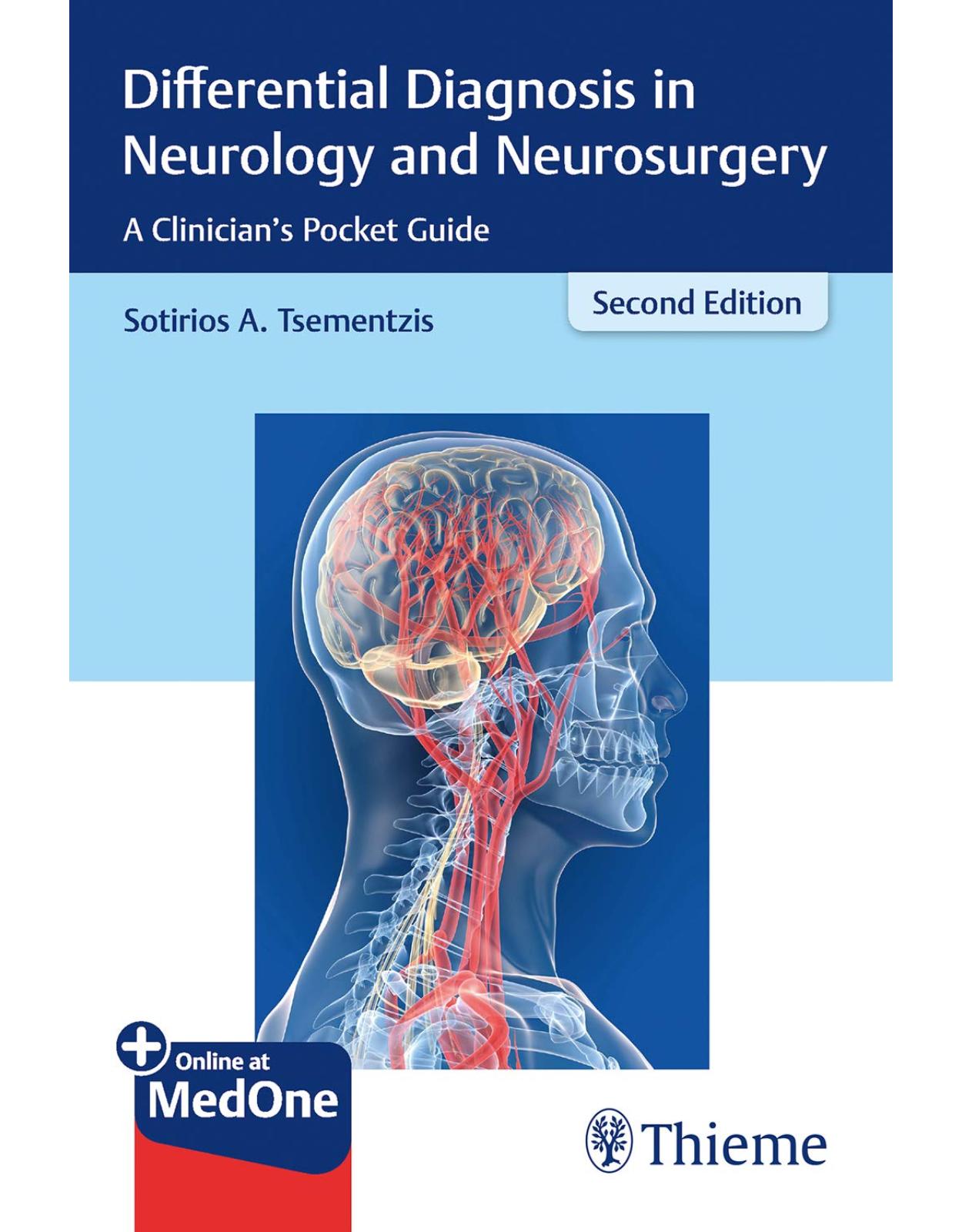
Differential Diagnosis in Neurology and Neurosurgery: A Clinician’s Pocket Guide
Livrare gratis la comenzi peste 500 RON. Pentru celelalte comenzi livrarea este 20 RON.
Disponibilitate: La comanda in aproximativ 4 saptamani
Autor: Sotirios A. Tsementzis
Editura: Thieme Medical Publisher
Limba: Engleza
Nr. pagini: 714
Coperta: Paperback
Dimensiuni: 12.7 x 5.1 x 19.7 cm
An aparitie: 28 Feb. 2019
Now in a greatly expanded and updated new edition: The essential pocketbook for rapid and correct differentiation and interpretation of signs and symptoms of neurological and neurosurgical diseases and conditions.
Key Features:
- Exhaustive range of neurologic and neurosurgical disease and conditions covered
- Vital information presented in short texts, high-yield lists, and concise tables, for maximum efficiency in diagnostic work-ups
- Clinical and neuroimaging findings, guidelines and classifications, summarized in readily accessible tabular form
- Statistic overviews (common vs. rare, etc.) help guide diagnostic thought processes
- Special chapters highlight epidemiology, pediatric disorders, neuroradiology
Differential Diagnosis in Neurology and Neurosurgery is ideal as a quick reference in your daily practice, or as an exam preparation guide. This wealth of easily accessed information makes it invaluable to experienced practitioners (especially ER physicians) and to novices alike.
· 1 Epidemiological Characteristics of Neurological Diseases
· 1.1 Prevalence of Neurological Diseases
· 1.2 Epidemiology of Worldwide Neurological Disorders
· 1.3 The Incidence and Lifetime Prevalence of Neurological Disorders in a Prospective Community-Based Study in the United Kingdom
· 1.4 Prevalence and Incidence of Neurological Disorders in the United States: A Meta-Analysis
· 1.5 Primary Malignant Brain Tumors in Adults
· 1.6 Epidemiology of Epilepsy
· 1.7 Epidemiology of Spinal Cord Injuries and Risk Factors
· 2 Neuroradiology
· 2.1 Imaging Findings of Various Calvarial Bone Lesions
· 2.2 Solitary Radiolucent Skull Lesion without Sclerotic Margins in Adults
· 2.3 Solitary Radiolucent Skull Lesion without Sclerotic Margins in Children
· 2.4 Solitary Radiolucent Skull Lesion with Sclerotic Margins
· 2.5 Multiple Radiolucent Skull Lesions
· 2.6 Localized Increased Density or Hyperostosis of the Skull Vault
· 2.7 Diseases Affecting the Temporal Bone
· 2.8 Abnormalities of the Craniovertebral Junction
· 2.9 Craniosynostosis
· 2.10 Macrocephaly/Macrocrania
· 2.11 Microcephaly/Microcrania
· 2.12 Pneumocephalus
· 2.13 Small Pituitary Fossa
· 2.14 Enlarged Pituitary Fossa
· 2.15 Suprasellar and Parasellar Lesions
· 2.16 Intracranial Calcifications (ICC)
· 2.17 Calcifications of the Basal Ganglia
· 2.18 Parasellar Calcification
· 2.19 Posterior Fossa Tumors
· 2.20 Postoperative Brain Scar versus Residual Brain Tumor
· 2.21 Differential Diagnosis of Infarction versus Mass (Tumor, Abscess)
· 2.22 Stages and Estimation of Age of Hemorrhage on MRI
· 2.23 Normal Pressure Hydrocephalus versus Brain Atrophy
· 2.24 Meningeal Enhancement
· 2.25 Gyriform Enhancement
· 2.26 Corpus Callosum Lesions
· 2.27 Ring-Enhancing Lesions
· 2.28 Multifocal White Matter Lesions
· 2.29 Multiple Enhancing Lesions in White Matter
· 3 Developmental—Acquired Anomalies and Paediatric Disorders
· 3.1 Movements Resembling Neonatal Seizures
· 3.2 Pallid Breath-Holding Spells
· 3.3 Pseudoseizures
· 3.4 Neonatal Seizures by the Time of Onset
· 3.5 Neonatal Seizures
· 3.6 First Nonfebrile Tonic–Clonic Seizure After 2 Years of Age
· 3.7 Posttraumatic Epilepsy
· 3.8 Causes of Confusion and Restlessness
· 3.9 Hypotonic Infant or “Floppy Baby or Infant”
· 3.10 Causes of “Floppy” Infant
· 3.11 Precocious Puberty or Accelerated Sexual Maturity
· 3.12 Arthrogryposis
· 3.13 Progressive Proximal Weakness
· 3.14 Progressive Distal Weakness
· 3.15 Acute Generalized Weakness or Acute Flaccid Paralysis
· 3.16 Periodic Paralysis
· 3.17 Sensory and Autonomic Disturbances
· 3.18 Ataxia
· 3.19 Acute Hemiplegia
· 3.20 Progressive Hemiplegia
· 3.21 Acute Monoplegia
· 3.22 Agenesis of the Corpus Callosum
· 3.23 Megalencephaly
· 3.24 Unilateral Cranial Enlargement or Hemimegaloencephaly
· 3.25 Microcephaly
· 3.26 Tethered Spinal Cord Syndrome
· 3.27 Diastematomyelia
· 4 Cranial Nerve Disorders
· 4.1 Anosmia
· 4.2 Oculomotor Nerve Palsy
· 4.3 Trochlear Nerve Palsy
· 4.4 Abducens Nerve Palsy (Sixth Cranial Nerve)
· 4.5 Trigeminal Neuropathy
· 4.6 Orbital Apex Syndrome(s)
· 4.7 Facial Nerve Palsy
· 4.8 Bell’s Palsy
· 4.9 Bilateral Facial Nerve Palsy
· 4.10 Dizziness
· 4.11 Cranial Nerves IX, X, and XI Neuropathy
· 4.12 Hypoglossal Neuropathy
· 4.13 Multiple Cranial Nerve Palsies or Weakness of Multiple Ocular and Faciobulbar Muscles
· 4.14 Lower Cranial Nerve Syndrome
· 5 Neuro-Ophthalmology
· 5.1 Horner’s Syndrome
· 5.2 Abnormal Pupils
· 5.3 Pupillary Syndromes
· 5.4 Diplopia
· 5.5 Ptosis
· 5.6 Acute Ophthalmoplegia
· 5.7 Internuclear Ophthalmoplegia
· 5.8 Vertical Gaze Palsy
· 5.9 Unilateral Sudden Visual Loss
· 5.10 Bilateral Sudden Visual Loss
· 5.11 Slowly Progressing Visual Loss
· 5.12 Transient Monocular Blindness
· 5.13 Transient Visual Loss
· 5.14 Swollen Optic Discs (Papilledema)
· 5.15 Optic Nerve Enlargement
· 6 Intracranial Tumors
· 6.1 Intracranial Tumors Based on Their Anatomic Location
· 6.2 Pineal Tumors
· 6.3 Cerebellopontine Angle Masses
· 6.4 Internal Auditory Meatus Masses
· 6.5 Foramen Magnum Masses
· 6.6 Skull Base Tumors
· 6.7 Astrocytic Brain Tumors
· 6.8 Intraventricular Masses
· 6.9 Choroid Plexus Disease
· 6.10 Gliomatosis Cerebri or Astrocytosis Cerebri
· 6.11 Tolosa–Hunt Syndrome
· 6.12 Recurrence of Malignant Gliomas
· 6.13 Congenital Posterior Fossa Cysts and Anomalies
· 6.14 Posterior Fossa Cysts
· 6.15 Intracranial Cysts
· 6.16 Enhancing Lesions in Children and Young Adults
· 6.17 Tumoral Hemorrhage
· 6.18 Brain Metastasis
· 6.19 Subarachnoid Space Metastases
· 6.20 Hyperprolactinemia
· 7 Demyelinating Disease and Brain Atrophy
· 7.1 Multiple Sclerosis
· 7.2 Isolated Idiopathic Optic Neuritis
· 7.3 Acute Disseminated Encephalomyelitis
· 7.4 Transverse Myelitis
· 7.5 Progressive Multifocal Leukoencephalopathy
· 7.6 Central Pontine Myelinolysis
· 7.7 Multiple Sclerosis-Like Lesions
· 7.8 Cerebellar Atrophy
· 7.9 Friedreich’s Ataxia
· 7.10 Inherited Cerebellar Diseases
· 7.11 Cerebral Atrophy
· 7.12 Dementia
· 8 Cerebrovascular Disease (Stroke)
· 8.1 Cerebral Infarction in Young Adults
· 8.2 Stroke Differential Diagnosis
· 8.3 Stroke Risk Factors
· 8.4 Common Cardiac Disorders Associated with Cerebral Infarction
· 8.5 Transient Ischemic Attack
· 8.6 “Cryptogenic Strokes” (Embolic Stroke of Undetermined Source—ESUS)
· 8.7 Recurrent Stroke in Patients Who Are under Preventive Therapy
· 8.8 Cervical/Carotid Bruit
· 8.9 Cerebral Arteritis
· 8.10 Stroke
· 8.11 Clinical Grading Scales in Subarachnoid Hemorrhage
· 8.12 Cerebral Salt-Losing Syndrome of Inappropriate Secretion of Antidiuretic Hormone (SIADH) after a Subarachnoid Hemorrhage
· 8.13 SIADH and Diabetes Insipidus
· 8.14 Syndromes of Cerebral Ischemia
· 8.15 Brainstem Vascular Syndromes
· 8.16 Differentiation of Various Types of Cerebral Vascular Ischemic Lesions
· 8.17 Predisposing Factors and Associated Disorders of Cerebral Veins and Sinuses Thrombosis
· 8.18 Cerebral Venous Thrombosis
· 8.19 Spontaneous Intracerebral Hemorrhage (ICH)
· 9 Spinal Disorders
· 9.1 Failed Back Surgery Syndrome
· 9.2 Diffuse Thickening of the Nerve Root
· 9.3 Scar versus Residual Disc
· 9.4 Multiple Lumbar Spine Surgery (Failed Back Syndromes)
· 9.5 Low Back Pain
· 9.6 Claudication Pain
· 9.7 Differential Diagnosis of Claudicant Leg Pain
· 9.8 Thoracic Pain
· 9.9 Thoracic Outlet Syndrome
· 9.10 Cervical Radiculopathy
· 9.11 Mononeuropathy of the Lower Extremity
· 9.12 Radiculopathy of the Lower Extremities
· 9.13 Spinal Cord Lesions
· 9.14 Cauda Equina Mass Lesions
· 9.15 Cervical Spondylotic Myelopathy
· 9.16 Spontaneous Spinal Epidural Hematoma
· 9.17 Spinal Cord Compression
· 9.18 Epidural Spinal Cord Compression
· 9.19 Paediatric Intraspinal Cysts
· 9.20 Myelopathy in Cancer Patients
· 9.21 Lumbar Disc Protrusion
· 9.22 Disorders of Spinal Nerve Roots
· 9.23 Foot Drop
· 9.24 Sacroiliac Joint Dysfunction (Syndrome)
· 9.25 Sciatica
· 9.26 Posterior Knee Pain
· 9.27 Pregnancy-Related Low Back Pain
· 9.28 Systemic Diseases Producing Backache
· 9.29 Differential Diagnosis of Hip and Pelvis Pain in Young and Athletes
· 9.30 Juvenile Idiopathic Scoliosis
· 9.31 Cervicocephalic Syndrome versus Migraine versus Meniere’s Disease
· 9.32 Differentiation of Spasticity and Rigidity
· 10 Peripheral Nerve Disorders
· 10.1 Carpal Tunnel Syndrome
· 10.2 Ulnar Neuropathy
· 10.3 Claw Hand
· 10.4 Dupuytren’s Contracture
· 10.5 Radial Nerve Palsy
· 10.6 Meralgia Paresthetica
· 10.7 Femoral Neuropathy
· 10.8 Peroneal Neuropathy
· 10.9 Coccydynia
· 10.10 Tarsal Tunnel Syndrome
· 10.11 Morton’s Neuroma (Interdigital Neuroma)
· 10.12 Tingling in Hands and Feet
· 10.13 Peripheral Neuropathy
· 10.14 Lumbosacral Radiculopathy
· 10.15 Electrophysiologic Abnormalities of the Neuraxis
· 11 Movement Disorders
· 11.1 Hyperkinetic Movement Disorders
· 11.2 Chorea
· 11.3 Dystonia
· 11.4 Torticollis in Children (Head Tilt)
· 11.5 Blepharospasm
· 11.6 Parkinsonian Syndromes (Hypokinetic Movement Disorders)
· 11.7 Myoclonus
· 11.8 Tourette Syndrome and Other Tic Disorders
· 11.9 Tremor
· 11.10 Medical Conditions Associated with Gait Disorders
· 11.11 Neurological Disorders of Stance and Gait
· 11.12 Types of Stance and Gait
· 12 Neurotrauma
· 12.1 The Unconscious Patient
· 12.2 Hysterical “Unconscious” Patient
· 12.3 Blackouts: Episodic Loss of Consciousness
· 12.4 Glasgow Coma Scale (GCS)
· 12.5 The Full Outline of Unresponsiveness (FOUR) Score Coma Scale
· 12.6 Neurotrauma Paediatric Scales
· 12.7 Comatose Patients in the Emergency Room
· 12.8 Coma in Children
· 12.9 Coma in the Elderly
· 12.10 Unresponsive Patient
· 12.11 Metabolic and Psychogenic Coma
· 12.12 Metabolic and Structural Coma
· 12.13 Coma-Like States
· 12.14 Trauma Score
· 12.15 Respiratory Patterns in Comatose Patients
· 12.16 Pupillary Changes in Comatose Patients
· 12.17 Spontaneous Eye Movements in Comatose Patients
· 12.18 Abnormal Motor Responses in Comatose Patients
· 13 Infections of the Central Nervous System
· 13.1 Pathogens Responsible for Bacterial Infections
· 13.2 Viral Infections
· 13.3 Central Nervous System Infections in the Compromised Host: Differential Diagnosis
· 13.4 Fungal Infections
· 13.5 Parasitic and Rickettsial Infections
· 13.6 Cat-Scratch Disease
· 13.7 Central Nervous System Infections in AIDS
· 13.8 Acute Bacterial Meningitis
· 13.9 Chronic Meningitis
· 13.10 Recurrent Meningitis
· 13.11 Conditions Predisposing to Recurrent Bacterial Meningitis
· 13.12 Recurrent Nonpurulent (Aseptic) Meningitis
· 13.13 Conditions Predisposing to Polymicrobial Meningitis
· 14 Pain
· 14.1 Myofascial Pain Syndrome
· 14.2 Fibromyalgia Syndrome
· 14.3 Postherpetic Neuralgia
· 14.4 Atypical Facial Pain
· 14.5 Cephalic Pain
· 14.6 Face and Head Neuralgias
· 14.7 Trigeminal Neuralgia
· 14.8 Glossopharyngeal Neuralgia and Neuritis
· 14.9 Painful Ophthalmoplegia
· 14.10 Headache: World Health Organization Classification
· 14.11 Pseudospine Pain
· 14.12 Back Pain in Children and Adolescents
· 14.13 Low Back Pain during Pregnancy
· 14.14 Back Pain in the Elderly Patients
· 15 Neurorehabilitation
· 15.1 Categories of Neurorehabilitation Scales
· 15.2 Measures (Scales) of Disability
· 15.3 Scales Used in Telerehabilitation and Human Performance Lab Related to Neurorehabilitation
· 15.4 Neuropsychological Evaluation and Differential Diagnosis of Mental Status Disturbances
· 15.5 Karnofsky Scale (Grading of Disability for Neoplastic Disease)
| An aparitie | 28 Feb. 2019 |
| Autor | Sotirios A. Tsementzis |
| Dimensiuni | 12.7 x 5.1 x 19.7 cm |
| Editura | Thieme Medical Publisher |
| Format | Paperback |
| ISBN | 9783132417182 |
| Limba | Engleza |
| Nr pag | 714 |
-
71300 lei 66600 lei

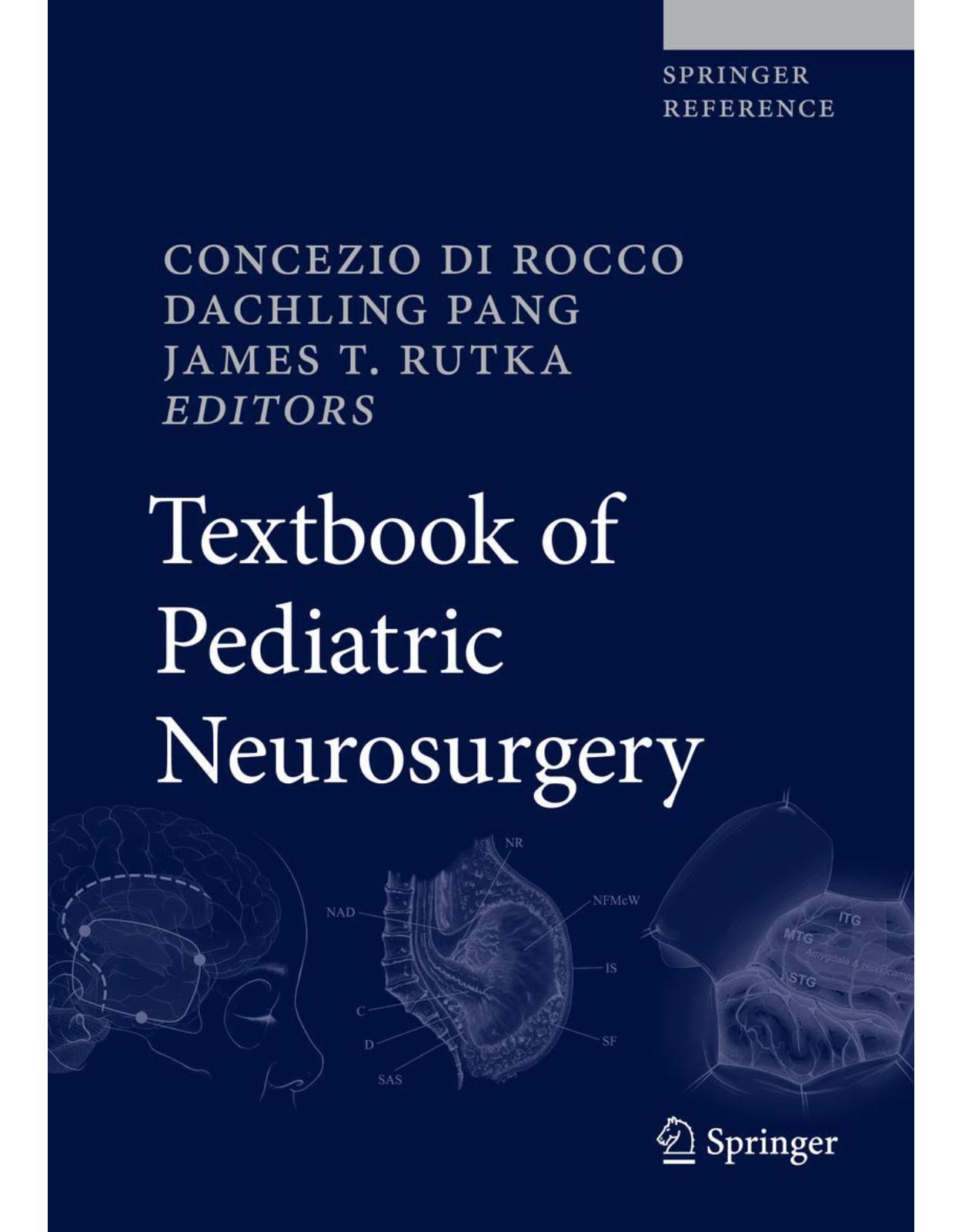
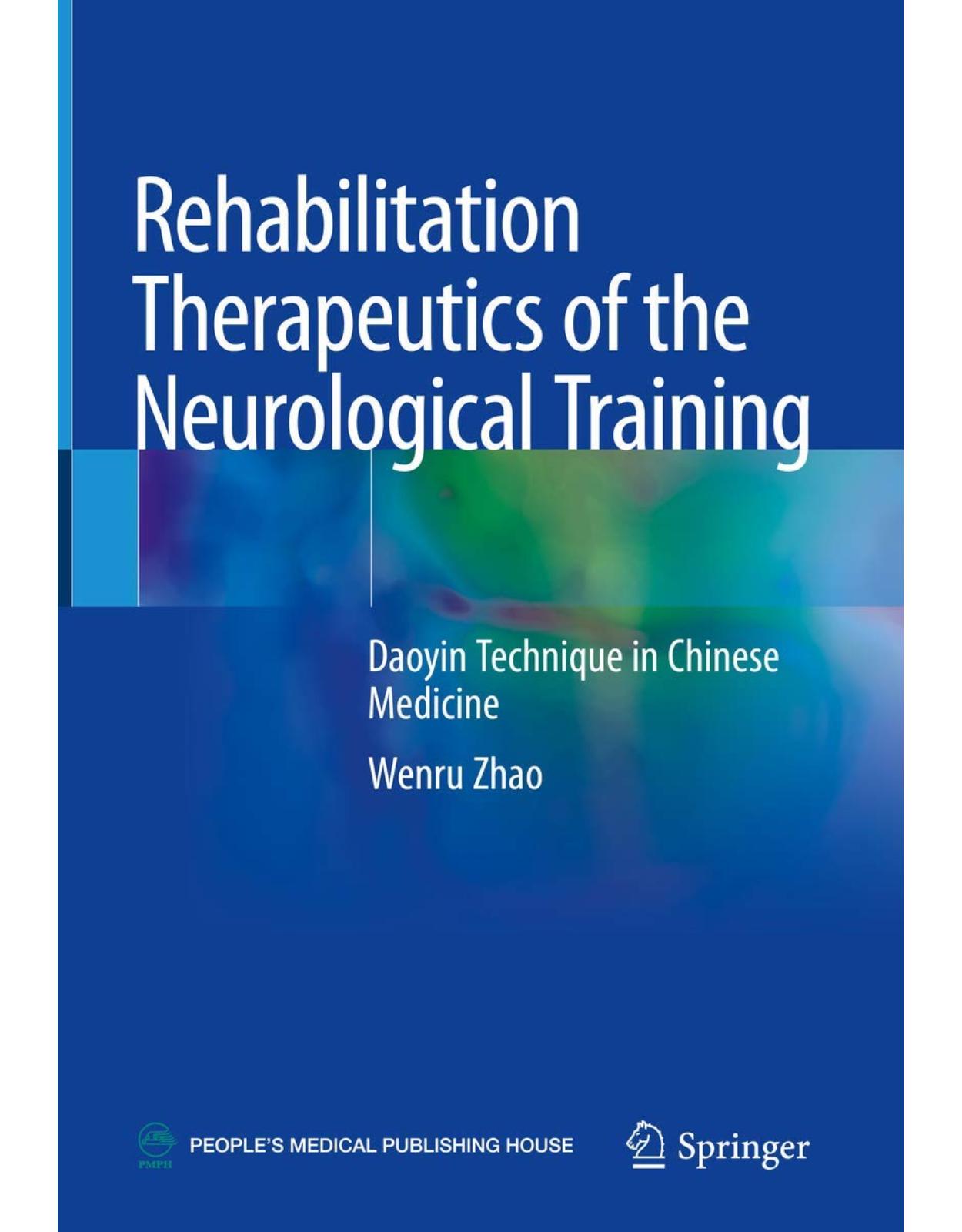
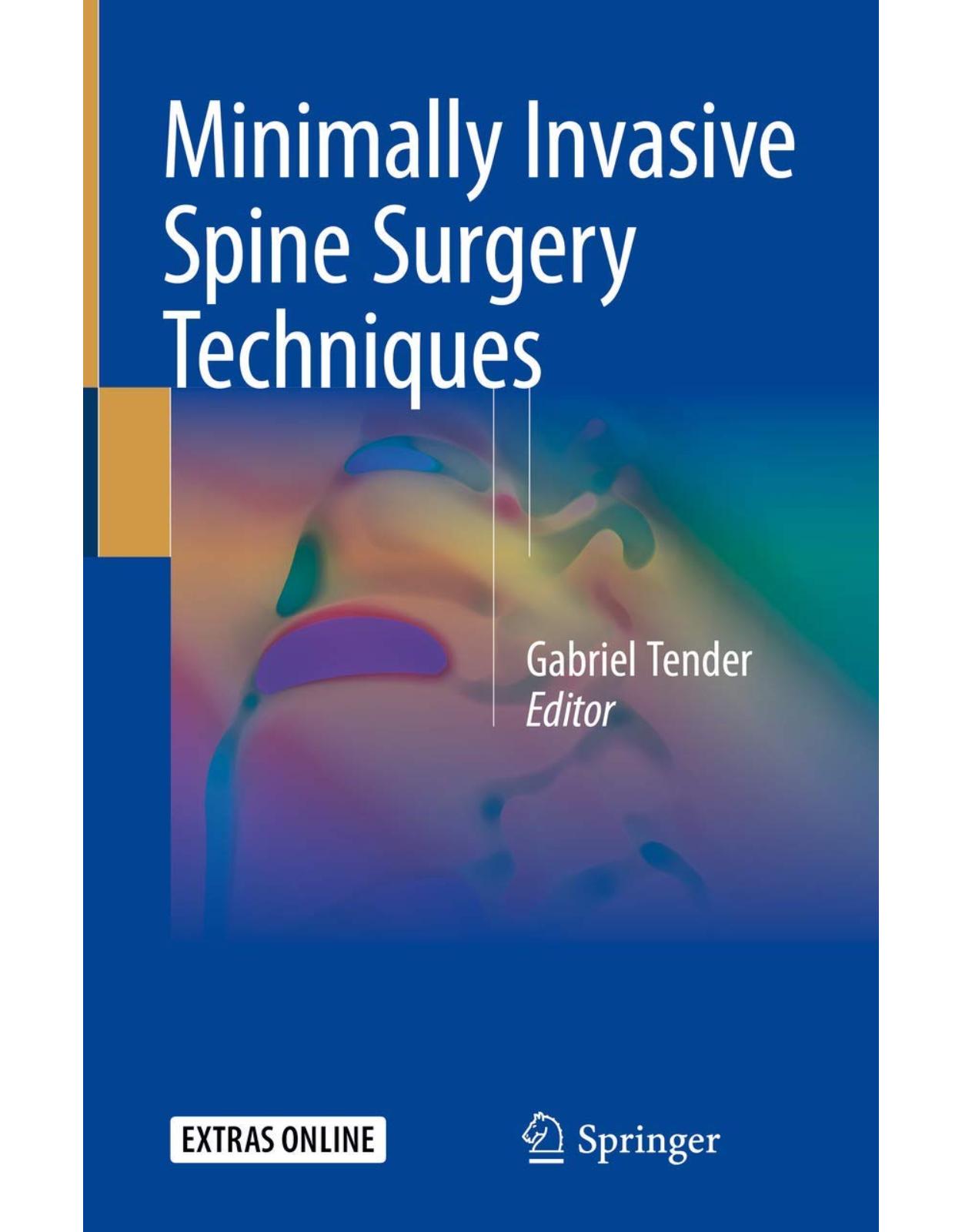
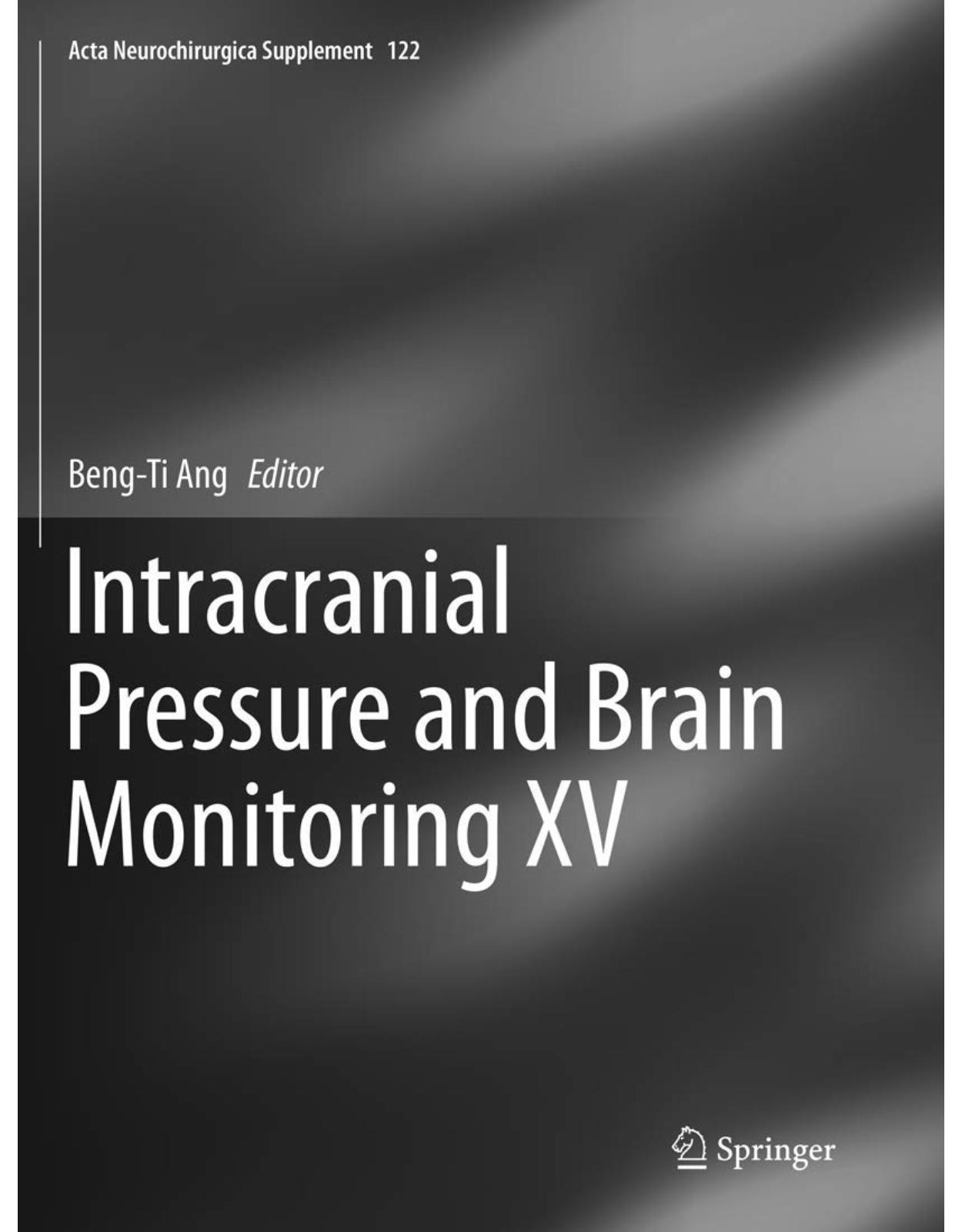
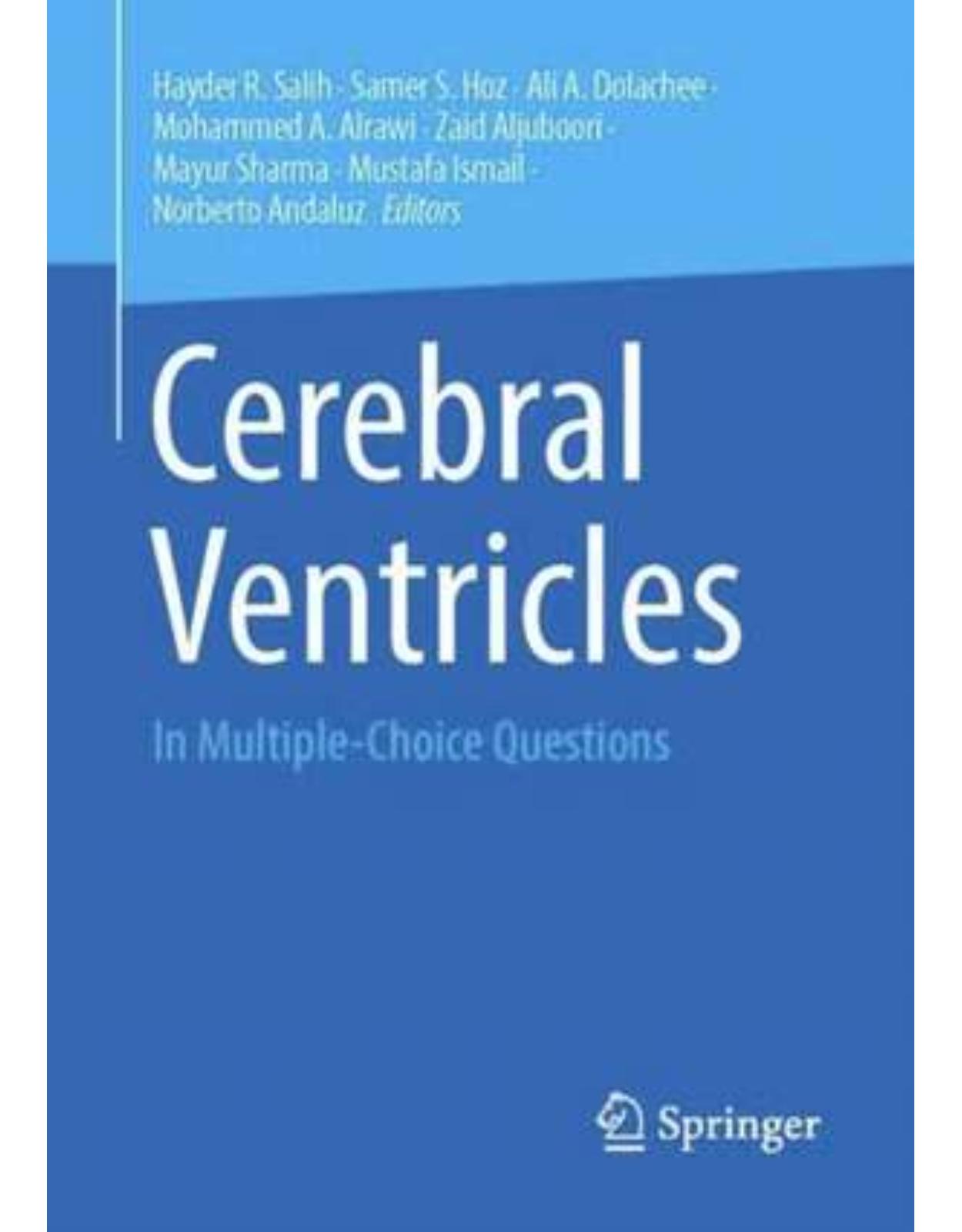
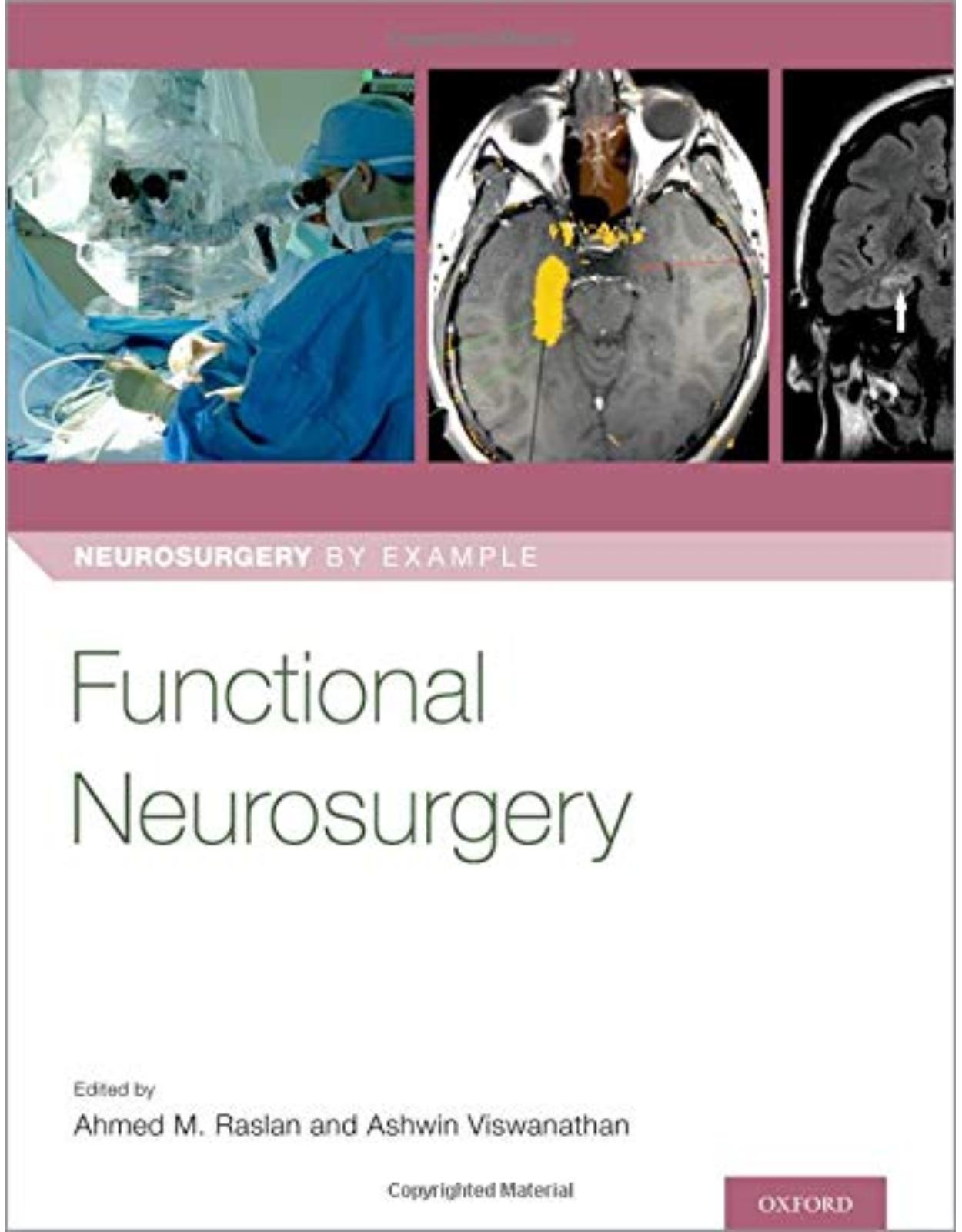
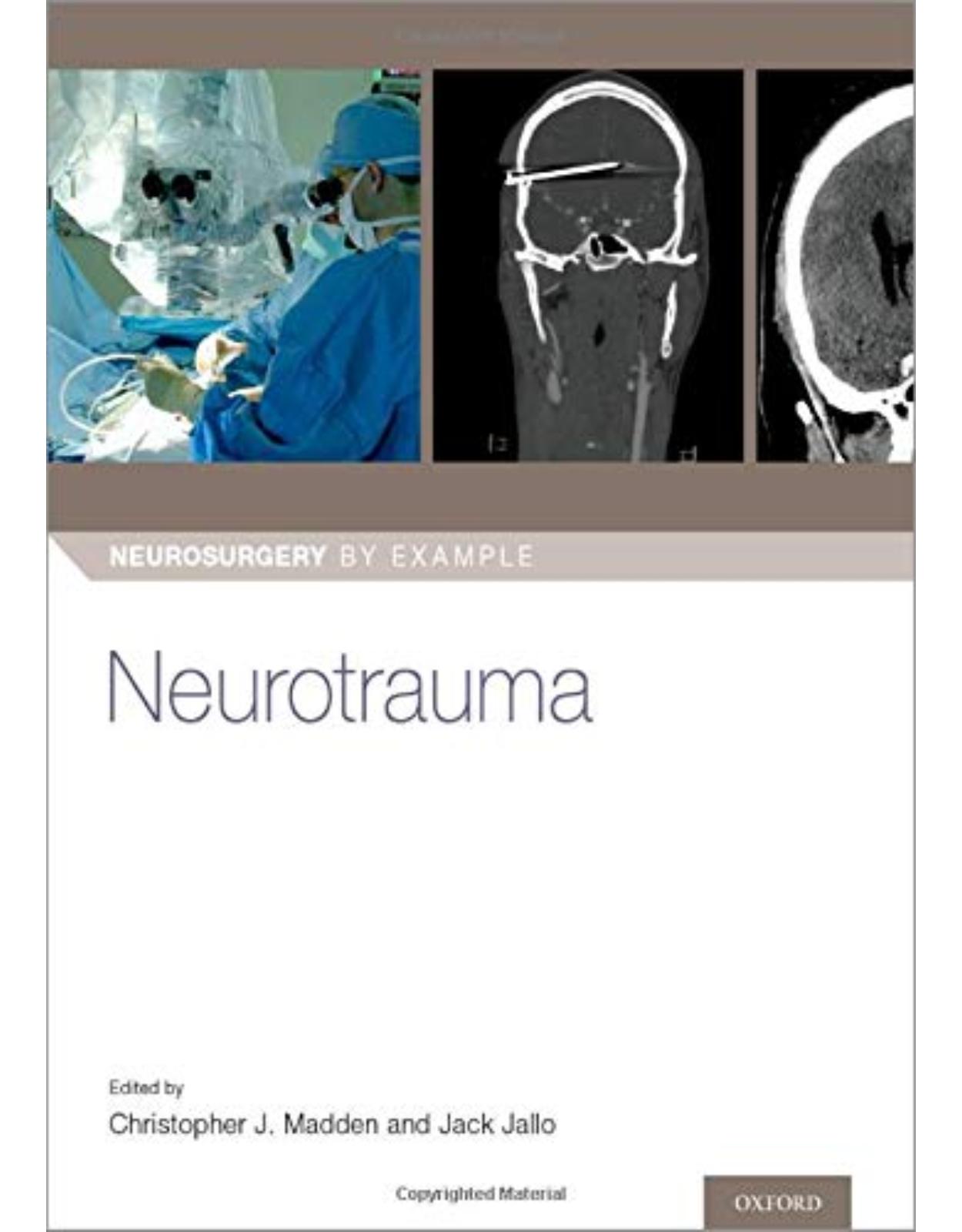
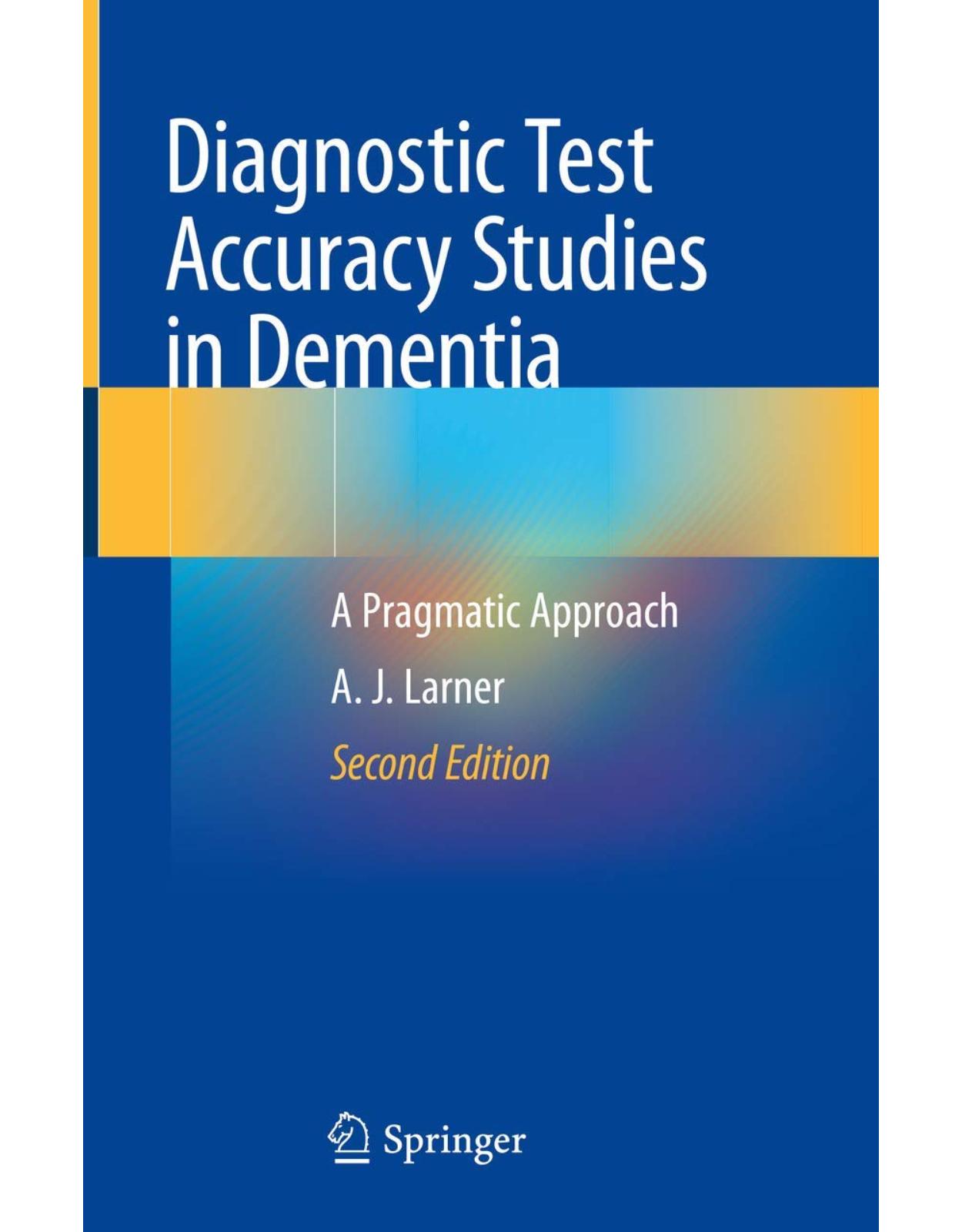
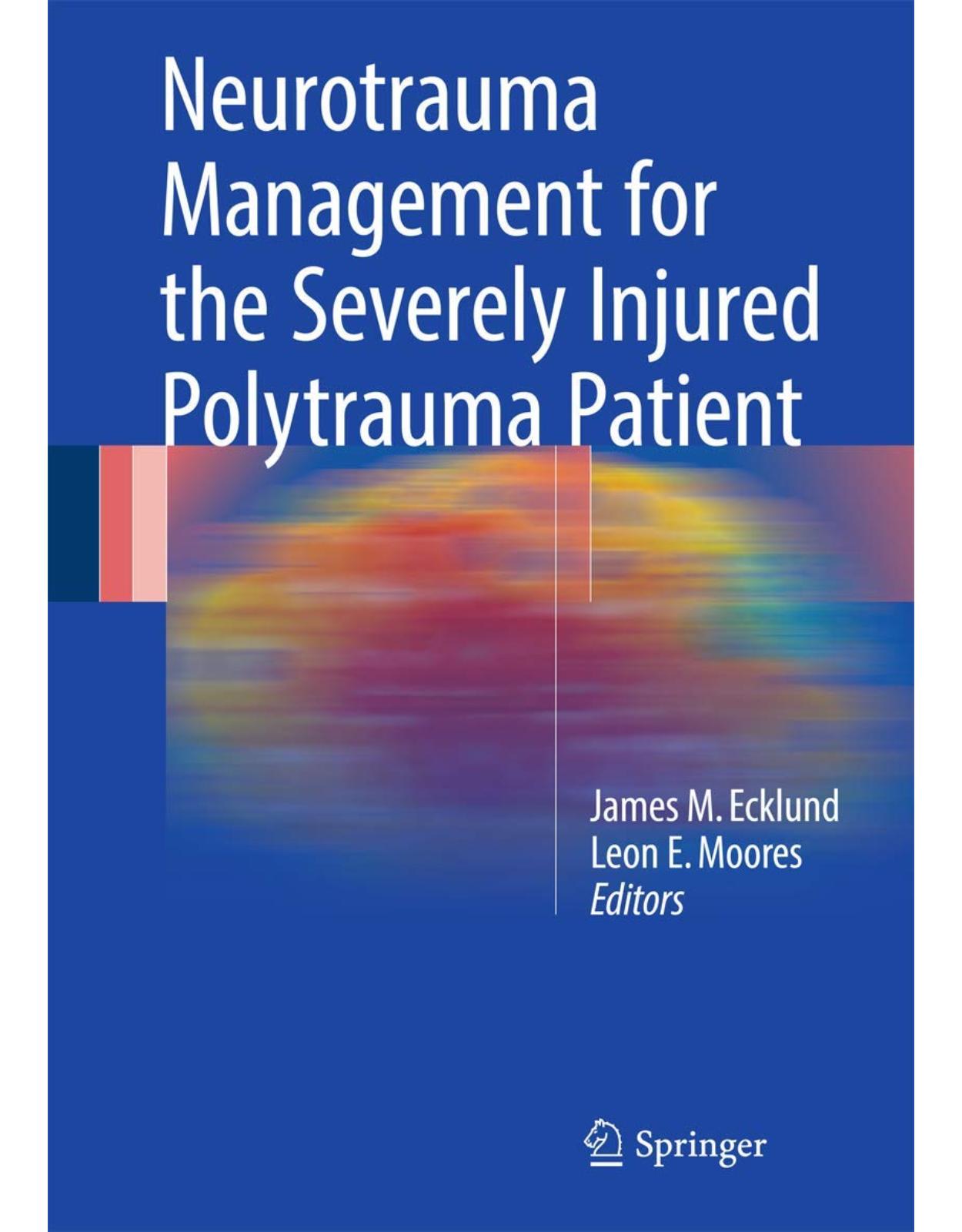
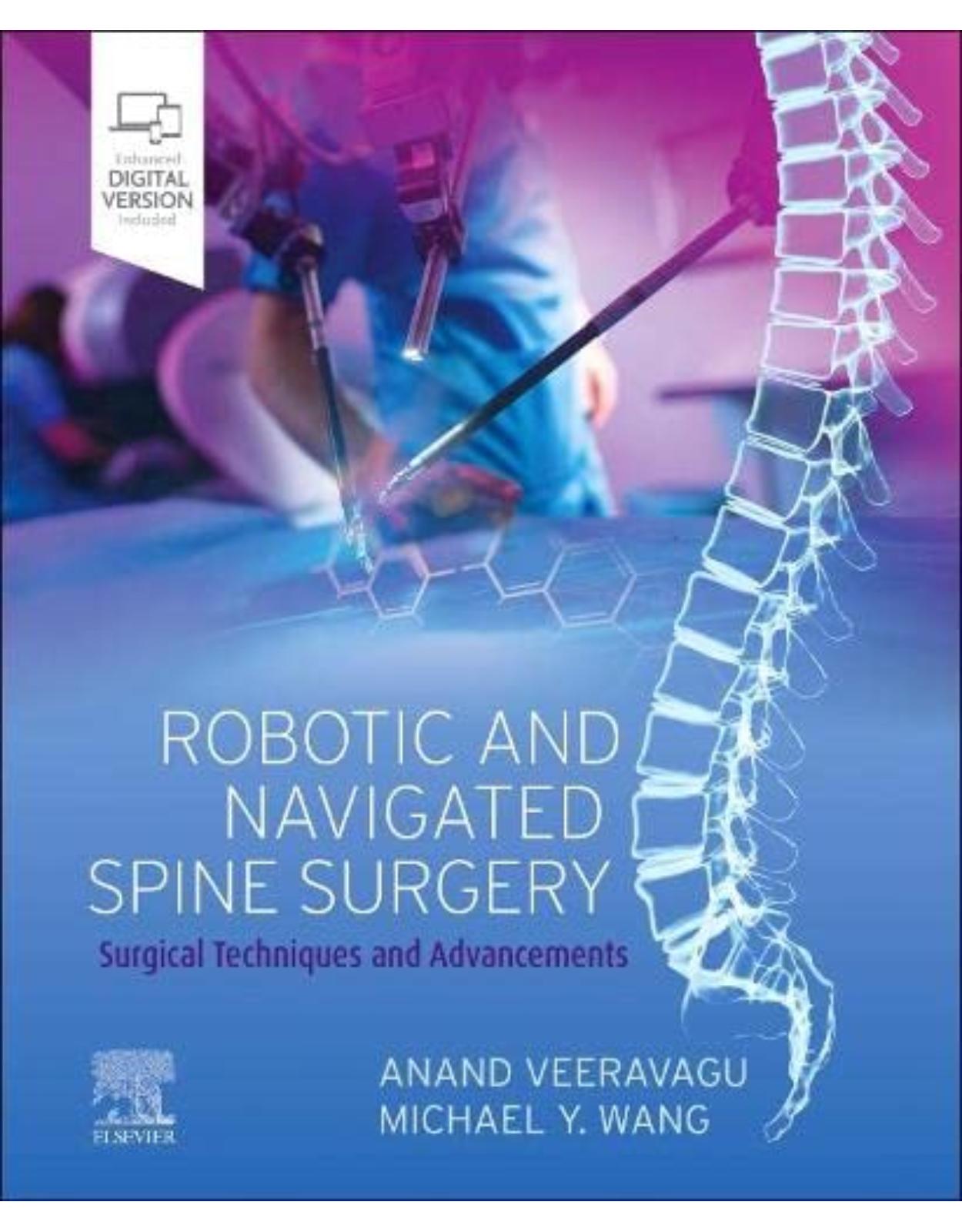
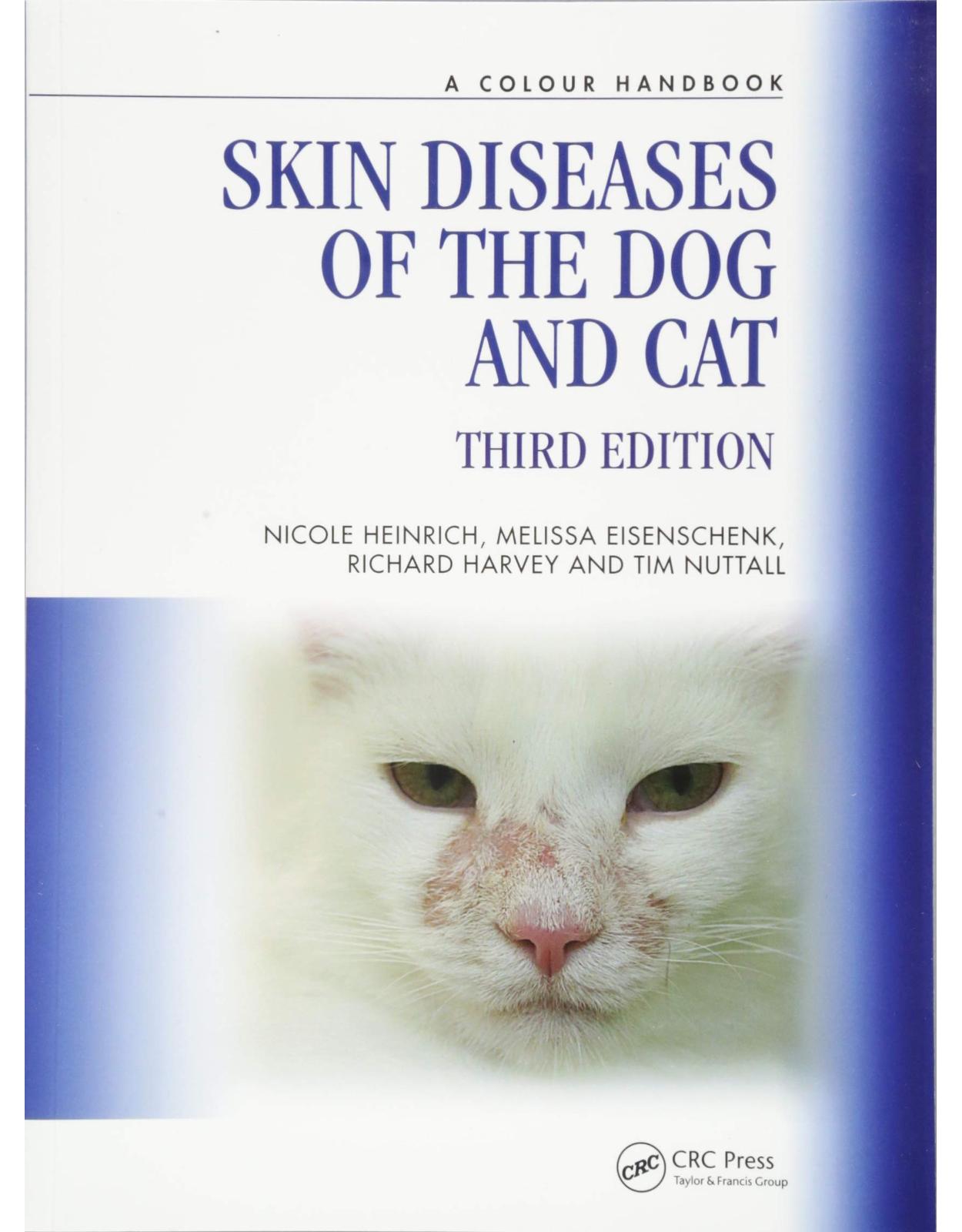
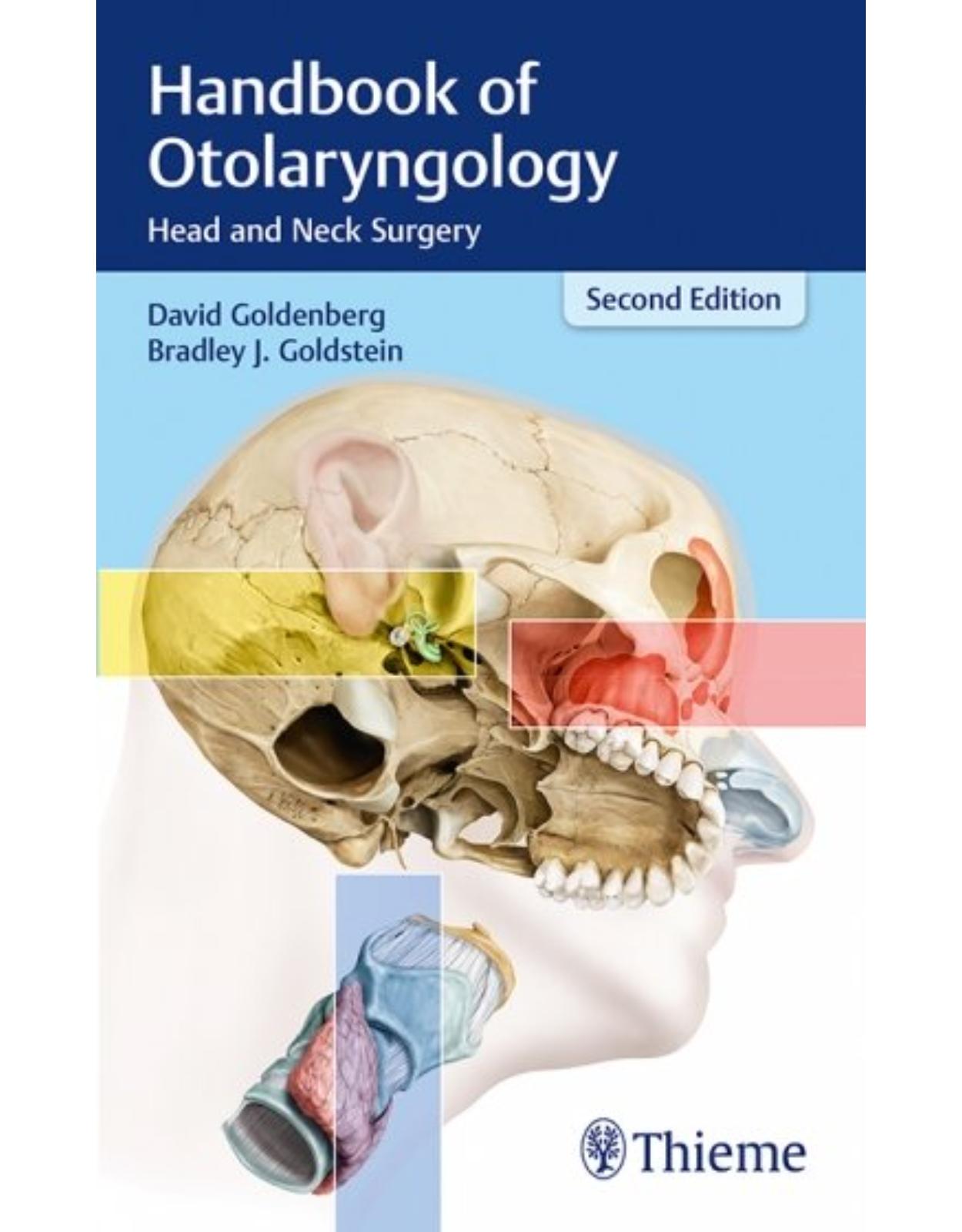

Clientii ebookshop.ro nu au adaugat inca opinii pentru acest produs. Fii primul care adauga o parere, folosind formularul de mai jos.